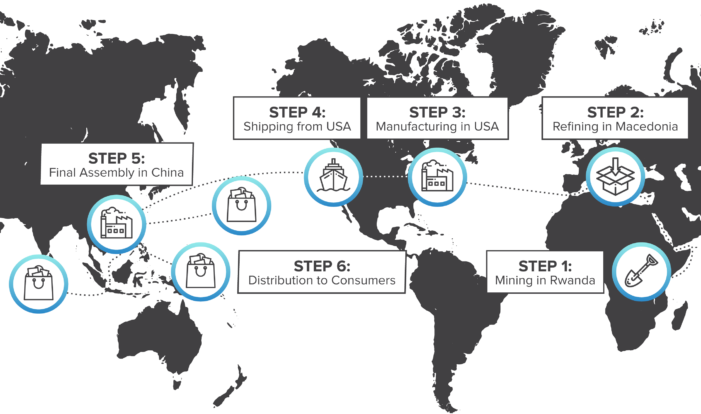Home
| About
| Mine Tracker
| RSS
| Footer
▄▄▄▄▄▄▄▄▄▄▄▄▄▄▄▄▄▄▄▄▄▄▄▄▄▄▄▄▄▄▄▄▄▄▄▄▄▄▄▄▄▄▄▄▄▄▄▄▄▄▄▄▄▄▄▄▄▄▄▄▄▄▄▄▄▄▄▄▄▄▄▄▄▄▄▄▄▄▄▄▄▄▄▄▄▄▄▄▄▄▄▄▄▄▄▄ █▄▄░▄▄█░▄▄▀█░▄▄▀█▀▄▀█░▄▄███░▄▄▀█░▄▄▀█░▄▀███▄▄░▄▄█░▄▄▀█░▄▄▀█▀▄▀█░▄▄█░▄▄▀█░▄▄▀██▄██░███▄██▄░▄█░██░ ███░███░▀▀▄█░▀▀░█░█▀█░▄▄███░▀▀░█░██░█░█░█████░███░▀▀▄█░▀▀░█░█▀█░▄▄█░▀▀░█░▄▄▀██░▄█░███░▄██░██░▀▀░ ███░███▄█▄▄█▄██▄██▄██▄▄▄███▄██▄█▄██▄█▄▄██████░███▄█▄▄█▄██▄██▄██▄▄▄█▄██▄█▄▄▄▄█▄▄▄█▄▄█▄▄▄██▄██▀▀▀▄ ▀▀▀▀▀▀▀▀▀▀▀▀▀▀▀▀▀▀▀▀▀▀▀▀▀▀▀▀▀▀▀▀▀▀▀▀▀▀▀▀▀▀▀▀▀▀▀▀▀▀▀▀▀▀▀▀▀▀▀▀▀▀▀▀▀▀▀▀▀▀▀▀▀▀▀▀▀▀▀▀▀▀▀▀▀▀▀▀▀▀▀▀▀▀▀▀
Report; Reimagining the Seafood Import Monitoring Program
https://www.stimson.org/wp-content/uploads/2024/07/REPORT_Reimagining-SIMP-Session-2-StimsonFishWise.pdf
Many workshop participants supported the idea that digitizing supply chain records is crucial for effective and efficient risk analytics. Although SIMP was developed as a risk-based program, it still needs an underlying automated risk analytics platform to synthesize the enormous quantities of data provided by the seafood industry and link to external datasets or databases. Automated and digitized systems play a crucial role in enhancing risk analyses for seafood products by leveraging advanced technologies such as AI/ML to gather, analyze, and interpret large volumes of data efficiently. By processing data from multiple sources, including historical data, supply chain data, and third-party data, automated systems lend themselves to regular monitoring of risks that adapt to the evolving nature of seafood supply chains. These automated processes can also help identify patterns, anomalies, or outliers that might have otherwise gone unidentified by manual systems. By analyzing both historical data and current conditions, automated systems even have the potential to predict the likelihood of future risks, allowing for proactive risk management and targeted allocation of resources and enforcement efforts.
https://www.stimson.org/wp-content/uploads/2024/07/REPORT_Reimagining-SIMP-Session-2-StimsonFishWise.pdf
Many workshop participants supported the idea that digitizing supply chain records is crucial for effective and efficient risk analytics. Although SIMP was developed as a risk-based program, it still needs an underlying automated risk analytics platform to synthesize the enormous quantities of data provided by the seafood industry and link to external datasets or databases. Automated and digitized systems play a crucial role in enhancing risk analyses for seafood products by leveraging advanced technologies such as AI/ML to gather, analyze, and interpret large volumes of data efficiently. By processing data from multiple sources, including historical data, supply chain data, and third-party data, automated systems lend themselves to regular monitoring of risks that adapt to the evolving nature of seafood supply chains. These automated processes can also help identify patterns, anomalies, or outliers that might have otherwise gone unidentified by manual systems. By analyzing both historical data and current conditions, automated systems even have the potential to predict the likelihood of future risks, allowing for proactive risk management and targeted allocation of resources and enforcement efforts.
Mine-to-manufacturer traceability of a conflict mineral
https://www.hyperledger.org/learn/publications/tantalum-case-study

UK-based Circulor created a system that ensures tantalum is mined, transported, and processed under approved conditions with an unbroken chain of custody. Powered by a permissioned blockchain built on Hyperledger Fabric, the system uses facial recognition and QR codes to deliver a world first: mine-to-manufacturer traceability of this vital resource.
https://www.hyperledger.org/learn/publications/tantalum-case-study

UK-based Circulor created a system that ensures tantalum is mined, transported, and processed under approved conditions with an unbroken chain of custody. Powered by a permissioned blockchain built on Hyperledger Fabric, the system uses facial recognition and QR codes to deliver a world first: mine-to-manufacturer traceability of this vital resource.
GS1 Traceability main page
https://www.gs1.org/standards/traceability
GS1-enabled traceability solutions provide the best path to interoperability, protect companies' investments and scale up. Greater levels of digitalisation, speed and data accuracy become possible. Each trading partner in the chain becomes free to choose the solution on the market that best meets its specific needs. GS1 provides the global and common language for traceability solutions and the ecosystem for its implementation. GS1 makes the industry vision operational and scalable through collaborations and community development, registries about products and places, capacity building and local implementation services in more than 100 countries.
https://www.gs1.org/standards/traceability
GS1-enabled traceability solutions provide the best path to interoperability, protect companies' investments and scale up. Greater levels of digitalisation, speed and data accuracy become possible. Each trading partner in the chain becomes free to choose the solution on the market that best meets its specific needs. GS1 provides the global and common language for traceability solutions and the ecosystem for its implementation. GS1 makes the industry vision operational and scalable through collaborations and community development, registries about products and places, capacity building and local implementation services in more than 100 countries.